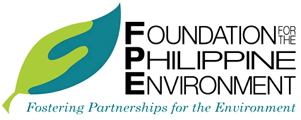News
FPE @ 21: Highlights and Milestones
Posted on January 17, 2013
Pre-1992
US$125-million Natural Resources Management Program makes debt-for-nature swaps accessible to developing countries seeking to reduce external debt. Technical assistance from WWF-US and Philippine Business for Social Progress sets stage for local endowment fund for the environment.
1992
FPE registered with the SEC on 15 January 1992, becomes the country’s first and largest non-government grant-making organization for environmental projects of civil society. First grants approved: a book project on the “Politics of Logging” by the Philippine Center for Investigative Journalism; Baliangao Integrated Sea Sanctuary by the Pipuli Foundation; and Promotion of Conservation Awareness in Misamis Occidental by the Bukagan Ecological Association.
1993
Advisory committees in Luzon, Visayas and Mindanao set their Regional Environmental Agenda and select priority conservation sites. Among the earliest grants were for NGO/PO efforts on protected area and CBRM.
1994
Full management of the US$22 million Environmental Endowment Fund WAS transferred from USAID to FPE for biodiversity projects. FPE and MacArthur Foundation co-fund community forestry projects in Cagayan Valley, Western Samar and Sarangani provinces.
1995
Experts Advisory Panel formed to assess 21 priority sites. FPE finds a home in Teacher’s Village, Quezon City.
1996
Cooperation with development assistance program and agrarian reform organization promotes sustainable agriculture systems and assists indigenous communities in formulating ancestral domain management plans.
1997
FPE hosts 1st Asia Pacific Forum on National Environmental Funds and supervises EU Co-Directors’ Meeting on the Environment. MacArthur Foundation, Keidanren Nature Conservation Fund and Ford Foundation co-fund community-based forestry, resource and protected area management projects.
1998
Grants emphasize deployment of more scientists and biodiversity practitioners to local communities.
1999
Regional Environmental Agenda and CBRM help frame FPE’s strategic focus. More complementary funding from international donors (Australia, GEF, UNDP and USAID) for the conservation of Mt. Matutum, Ligawasan Marsh, and Bohol Island Marine Triangle; and assessment of climate change impact on biodiversity loss. FSSI, PRRM and FPE co-publish “Living Stories: Exemplary Practices in Environment and Sustainable Development.” FPE joins Bishops-Businessmen’s Conference environment committee to facilitate resolution of environmental problems and issues affecting the poor.
2000
FPE adopts Area-Based Strategy for more visible collaboration and connectedness with partners; decentralizes operational accountability and responsibility for the environment.
2001
FPE co-organizes 1st National Conference on Protected Area Management in Davao. It supports the Pederasyon ng mga Aytang Samahan sa Sambales (PASS), a pioneering attempt for different organizations and communities of indigenous people (IP) to jointly manage their ancestral domains.
2002
FPE is instrumental in setting up the PTFCF, the organization that manages the $8.2-million commitment from the US Tropical Forest Conservation Act to fund forest conservation in the next 14 years. FPE mounts proactive Environmental Legal Defense program for partners to become better protected by environmental laws.
2003
FPE forms a subsidiary—Fostering People’s Education, Empowerment and Enterprise or FPE3—for sustainable enterprise ventures of environment-oriented CSOs. The country hosts, with FPE’s support, the 3rd Southeast Asian Regional Meeting of the IUCN-World Commission on Protected Areas. FPE and PBSP help develop monitoring and evaluation indicators for Population, Health and Environment.
2004
FPE and other groups lead formation of Task Force Sierra Madre in response to disastrous mountain slides in Infanta, Quezon. A PCIJ grant examines the tragedy’s roots and identifies possible causes, therefore helping fast track the filing of court cases against logging firms. FPE establishes Advocacy Support Fund for IPs and other groups that address mining issues.
2005
FPE plots CARRESI strategy (constituency building, advocacy, research, resource mobilization, environmental defense, sites, and institutional building) for its grants program. The 1st National Grassroots Conference on Mining in Marinduque examines community impact and perceived environmental threats.
2006
Research on the impact of aerial pesticide spraying in Davao banana plantations affirms local ordinance citing hazards to health and the environment of the activity.
2007
FPE supports the Green Renewable Independent Power Producers (GRIPP) Climate-Friendly Cities project, showing clean energy solutions that curb carbon emissions and make viable business models. GRIPP launches full-scale operation in Bacolod City through a fleet of electric jeepneys.
2008
FPE looks into mitigating impacts of climate change, developing program framework on Community-Based Disaster Risk Reduction for its sites. FPE supports the publication of Newsbreak magazine’s special issue entitled “The Big Dig: Mining Rush Rakes Tons of Conflict” – the first journalistic assessment of the mining industry since the Supreme Court upheld the Mining Act in 1995.
2009
Resource and socio-economic assessments lead to discovery in Balbalasang-Balbalan National Park of Rafflesia leonardi, an indigenous variety of the world’s largest flower.
2010
Environmental Defense Program expands legal and paralegal services through the Alternative Law Group. CSOs step up reforestation of Marikina watershed in the aftermath of typhoon “Ondoy.” FPE manages “Mainstreaming Indigenous Peoples’ Participation in Environmental Governance” project funded by EU and FUNDESO.
2011
FPE becomes bonafide member of the International Union for Conservation of Nature (IUCN). Advisers and partners revisit stand on national issues including mining, logging, unsustainable agriculture, non-renewable energy, climate change and disaster risks, pollution, and land conversion. FPE implements a USAID-funded project to upscale forest restoration efforts in key biodiversity areas. Cumulative revenue of FPE’s endowment fund breaks P1 billion, signaling a long-term boost to FPE’s viability and effectiveness.
2012
More partnerships forged with government, NGO and business sectors. FPE helps persuade DENR to phase out exotic trees and use Philippine native trees instead for the National Greening Program.
2013
FPE currently operates in 8 sites of high biodiversity importance. It is preparing to enter another 12 sites. To date, FPE has supported more than 1,000 civil society organizations (CSOs) in conserving biodiversity and sustaining communities in more than 65 critical sites through more than 1,200 projects nationwide.
Click here to view the ad posted in the Philippine Daily Inquirer on January 15, 2013.

 DISPLAY CALENDAR
DISPLAY CALENDAR
 Read Policy Briefs
Read Policy Briefs
 View Our Partners
View Our Partners
 Access Grants MIS
Access Grants MIS
 Login to Webmail
Login to Webmail